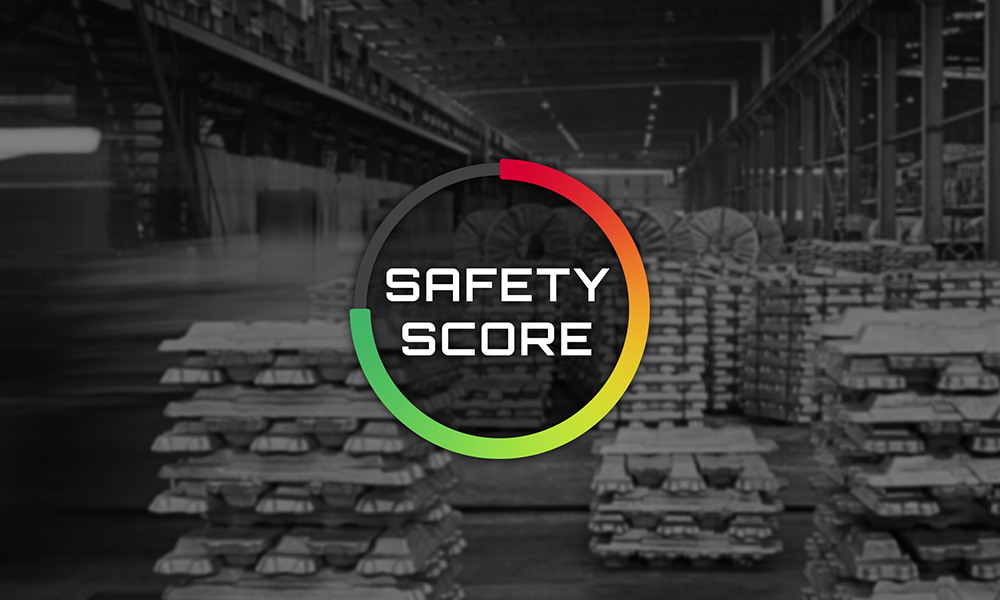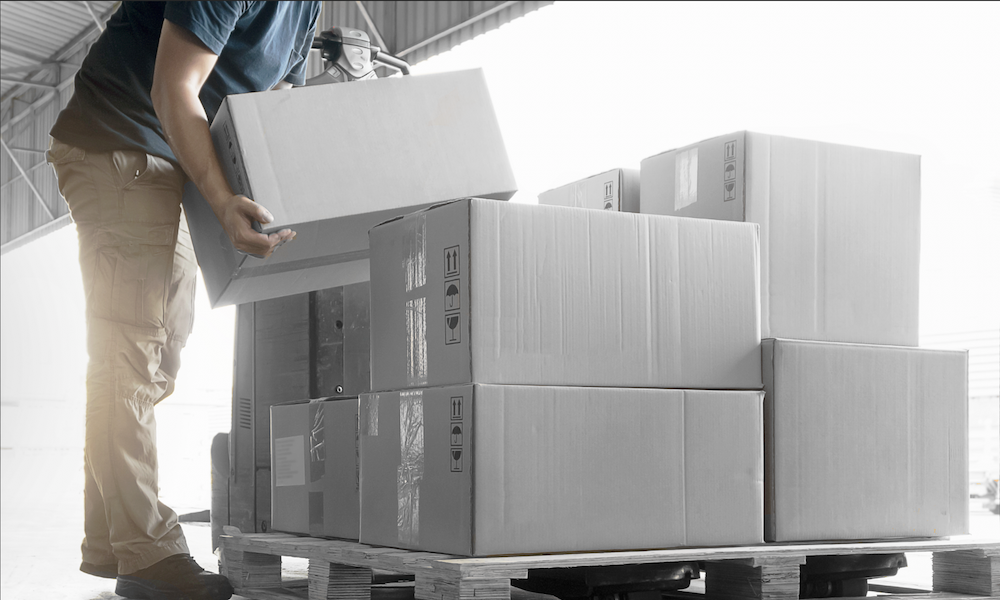How to Reduce Workers’ Compensation Costs With Safety Management Systems
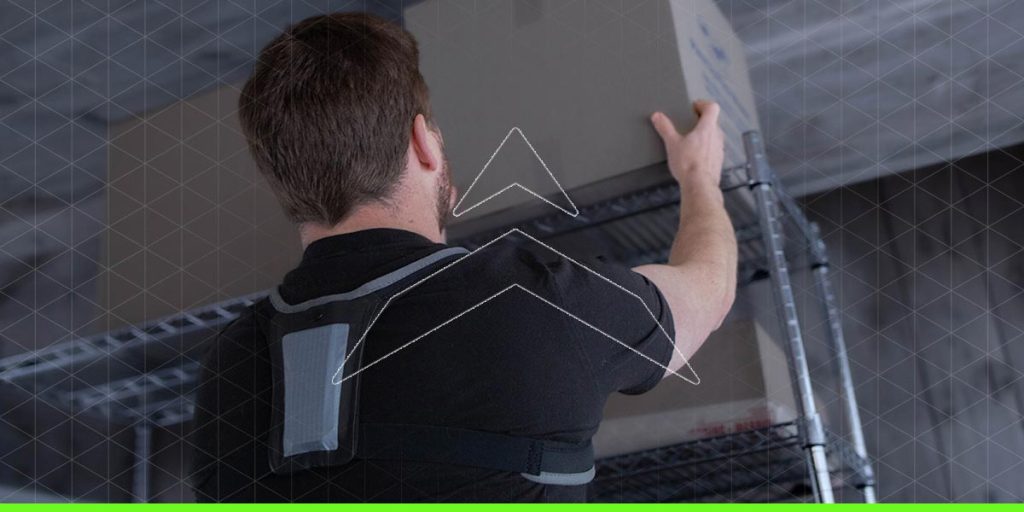
Safety is a priority in any industry, and while you may have excellent precautions in place, injuries can happen — anything from pulled back muscles to cuts. Understanding how to reduce workers’ comp claims and the risk they can pose to your company comes down to a strong safety plan. Companies that experience increased compensation costs often undergo internal cutbacks to decrease costs. But it’s less about reducing the number of injuries on-site and more about designing a strong safety management system.
Let’s learn how safety management systems can keep your employees out of harm’s way while reducing workers’ comp claims.
Common Injuries That Lead to Workers’ Comp Claims
Injuries on the job site are no joke, no matter if it’s a muscle strain or a more serious injury like a broken bone or long-term ailment from harsh environmental conditions. It’s important to understand the most common injuries to create the best strategy for your safety plan:
- Contusions: Bruises or swelling that occur from falls and other bumps to the body are considered contusions.
- Lacerations: Cuts can happen from improper use of a tool, poor lighting, clutter or an unmaintained machine.
- Punctures: Punctures to the body can occur from objects like knives, nails, splintered glass, dull blades or improper handling of tools and materials.
- Strains and sprains: These injuries include a torn or overstretched tendon or muscle from working on repetitive tasks like lifting, pulling or pushing heavy items, overhead reaching and awkward posture.
Other common injuries include overexertion, falls and exposure to harmful substances.
The Costs of Workers’ Comp Claims
Any of those workplace injuries can take a massive financial toll on your business. Workers’ compensation covers accidents and reckless damage to an employee. It’s a type of insurance that supports injured workers who were not under the influence or didn’t have purposeful intentions.
There are both direct and indirect costs when on-the-job accidents occur. An example of a direct cost would be the medical bill for the injury, and several indirect costs include:
- Training replacement workers
- Adjusting the work schedule
- Investigating the incident
- Implementing corrective measures
- Repairing or replacing damaged equipment
Other less tangible costs are lower employee morale and a loss in productivity. All these factors can set your business back if you’re not prepared.
Do Safety Management Systems Help Reduce Workers’ Compensation Claims?
Understanding how to reduce workers’ comp injuries starts with a safety management system. Safety programs help prevent injuries, fatalities and illnesses by helping identify and eliminate workplace hazards. When you invest in a safety program for your business, you will see a high safety return on investment (ROI). Companies with a strong safety culture can experience many benefits like:
- Increased productivity and engagement
- Fewer employee turnovers
- Fewer injuries and accidents
- Reduced workers’ compensation
Other ways you can minimize compensation claims include:
- Using personal protective equipment (PPE)
- Creating a buffer between hazards and workers
- Training employees on best safety practices
- Creating a return-to-work program
When incidents occur, your safety management system allows leaders to evaluate the issue, determine a root cause and take action to prevent it from recurring. You can also choose to be a part of the Occupational Safety and Health Administration (OSHA) Voluntary Protection Program. It recognizes businesses that achieve exemplary health and safety standards via a rigorous evaluation.
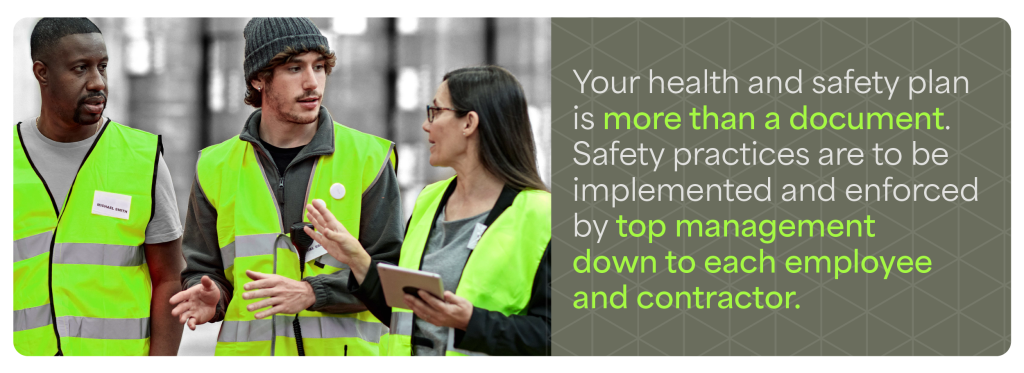
How to Implement Safety Practices to Reduce Workers’ Compensation Claims
How can you reduce claims, and how do you handle injuries when they arise?
There are different tactics you can implement in the workplace to reduce injuries and, therefore, workers’ comp costs. Because workplace injuries are unavoidable, it’s in your best interest to have a health and safety plan in place that includes:
- Strong leadership: The leaders of your company should make the health and safety plan a core value by establishing goals and communicating them to team members. You should value safety and set a good example, as a great safety culture starts from the top down.
- Employee participation: Involve your workers in setting goals, reporting hazards, outlining incidents and keeping track of the business’s progress. A positive safety culture starts with strong leadership that filters down to the employees who are accountable for their safety and that of their co-workers.
- Hazard assessments: Have a process where people can identify and evaluate risks then report them as necessary. This assessment should be easily accessible for all team members and easy to follow.
- Prevention and control: Work with employees to prevent, eliminate and control hazards. You should invest in the best safety procedures, equipment and programs for your business.
- Training: Train employees about the health and safety program and how they each play a role. Workers should feel empowered to follow protocols and take appropriate actions after hands-on learning experiences.
- Safety program improvement: Monitor the program’s performance and its shortcomings, then decide how to implement new improvement opportunities. You should always be striving to enhance your safety plan compared to past objectives.
- Communication: Communicate the health and safety standards to everyone on your team, especially as you receive feedback and make updates. Defining everyone’s responsibility is a great first step that you can achieve through monthly safety procedure updates.
Your health and safety plan is more than a document. Safety practices are to be implemented and enforced by top management down to each employee and contractor. Throughout the year, celebrate your team’s successes to maintain high employee morale and motivate workers to continually follow your safety initiatives.
These practices can make a true difference in workplace safety, helping reduce injuries and, therefore, control workers’ compensation costs.
How StrongArm’s SafeWork System Can Help Reduce Workers’ Compensation Claims
Our SafeWork System is a wearable data-based solution with real-time insights that helps your workers to give their best and remain safe. It’s a sensor your workers can wear that alerts them when an action or environment is dangerous. SafeWork can detect bad bends, heavy lifting and awkward twisting as well as extreme noise levels and poor air quality. When workers are in danger of injuries, our SafeWork System will alert them.
Our devices record daily activities to help with data analysis, so you can see where your workers are having issues throughout the day. Maybe a shelf is too high and causing strain or perhaps the closed loading dock is creating an unstable environment that exposes people to harmful fumes.
StrongArm’s SafeWork technology makes unapparent issues more noticeable. It supports and preserves the health of your employees, and as a result, it can reduce workers’ compensation claims. We can individualize what data our system pulls depending on the client, which means the insights you look at are specific to your industry and company. We also offer customized data reports on a weekly, monthly or quarterly basis to help you set new benchmarks.
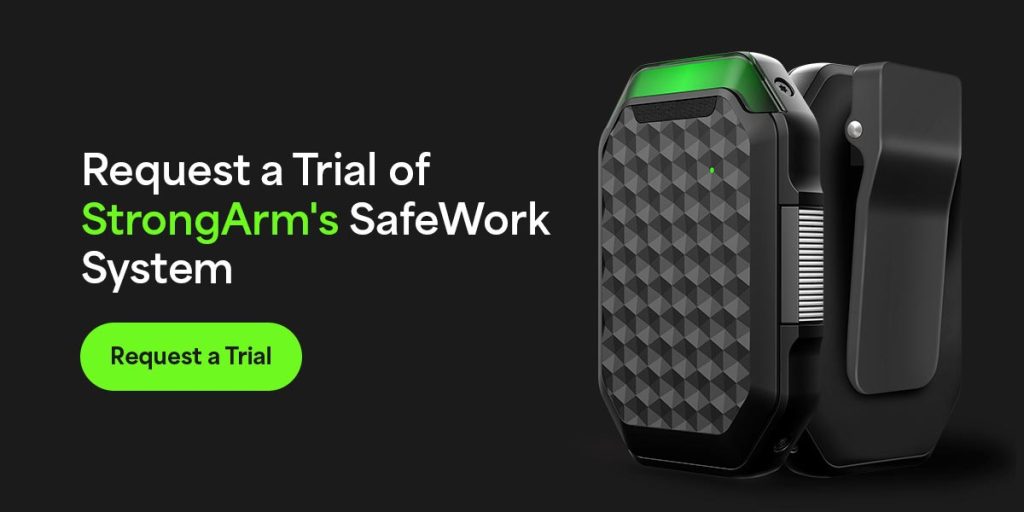
Request a Trial of StrongArm’s SafeWork System
At StrongArm Technologies, our solutions help prevent workplace injuries and optimize your workforce. Our safety management system alerts workers when they’re performing a risky and unsafe task, helping minimize the risk for on-site injuries. Whether you’re in consumer goods, warehouses, manufacturing, retail or another industry, StrongArm redefines workers’ compensation to keep your employees safe and support your bottom line.
Request a free trial to see how StrongArm’s SafeWork System can benefit your business and help reduce workers’ compensation claims. You can also reach out to a StrongArm representative to learn more about what we offer and how our integrated technology can support your business.

